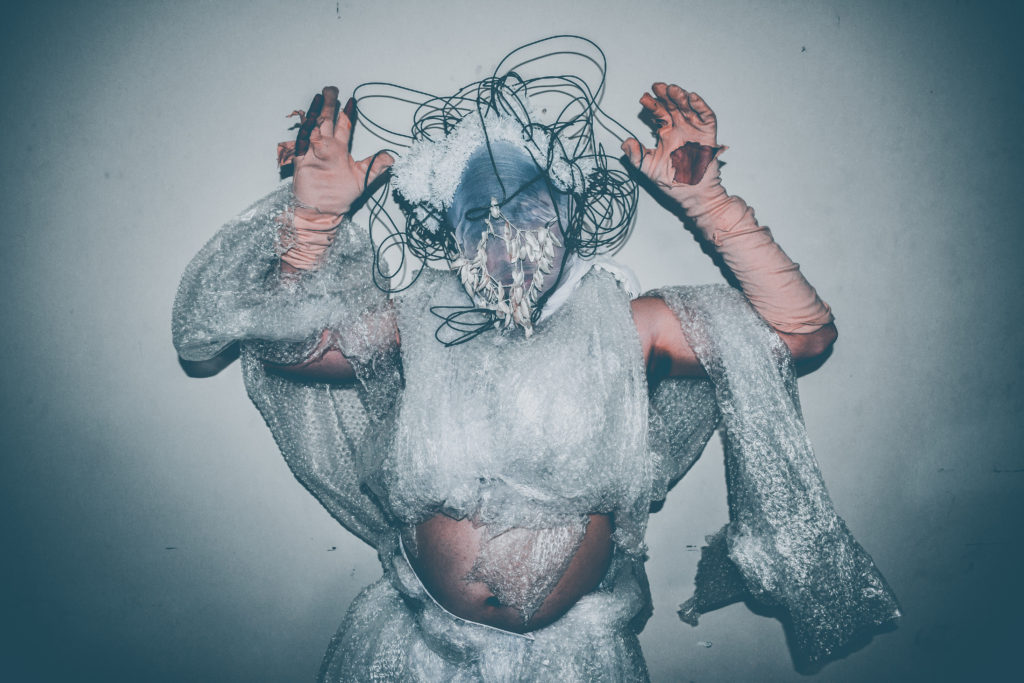
For ages, human beings have constantly strived for actualising their truth and expression, which entails a kind of vulnerability that is empowering in many ways. This expression of vulnerability is developed and exhibited through the course of social interactions, forging a social identity through recurrent performances in different social contexts, which are governed by a certain set of moralistic and ethical standards. The actor in this setting interacts with the environment and other actors reinforce the meaning of an identity for the primary actor. The performance of an identity may lead to several revelations about one’s self-concept and the social order of a society. This idea of performativity can be associated with identities pertaining to class, ethnicity, race, religion, caste and gender and sexuality. People performing different tasks and responsibilities are subjected to panopticon-like social contexts wherein they are under the constant gaze of other social beings who collectively ensure that behavioral structures lie in correspondence with the normative order. In other words, to avoid the punitive repercussions that one may be subjected to due to deviance from the norms set by the society, one indulges in a masquerade or two.
Gender identities, out of our many identities, do not have an essential origin. Rather, they are socially constructed and reinforced, as is argued by Postmodern theorists. In this way, all gender roles are cultural constructions that are performances internalised by individuals, which are then either upheld or refuted by society. This notion of performativity can be looked upon as a strategy of cultural survival, where gender identities are a part of what ‘civilises’ individuals within a certain culture—those who fail to ‘do their gender correctly’ are regularly punished. A gender identity is politicised in the process of its assessment of legitimacy, which is determined by bureaucratic and power hierarchies. As a consequence, the personal becomes the political.

The Supreme Court of India, on September 6, 2018, decriminalised Section 377 of the Indian Penal Code, a remarkable step towards shaping a more liberal perspective towards gender fluidity. The move helped several queer people transcend the shackles of institutionalised gender binaries. Due to this reform, stigmas and derogatory stereotypes associated with the transgender community as a consequence of mythological narratives were put to the test structurally—people with ‘deviant’ gender identities have always been wrongly associated with criminal activities. At the same, the judgement also paved the path for more transparency of diverse sexual orientations and expressions that were otherwise concealed by heteronormative masquerades, which caused an unceasing repression of self-worth and dignity. Although the decriminalisation of Article 377 played a monumental role in illuminating gender disparities and prejudices, there were several artistic avenues such as music and poetry through which such masquerades were unveiled. Drag as an artistic performance, has constituted a revolutionary movement in the realm of gender fluidity in the country. Several drag artists have come forth and expressed their creative selves unabashedly, defeating the existence of the gaze meant to scrutinize the body. Their fierce determination and passion that drives them to illuminate the realities of society better is what has been driving several LGBTQIA+ movements and pride parades across the country. These acts of resilience primarily shed light over intersectional identities in accordance with caste and ethnic identities while deciphering marginalisation on several levels.
Drag artists in the West such as RuPaul have greatly influenced some of the most prominent drag performers in India such as Rimi Heart, Betta Naan Stop, Rani KoHEnur, Durga, Bidishah and several other artists. These artists are also known for their remarkable contribution to theatre and musical performances wherein they dissolve the rigid natures of masculinity and femininity, and embrace both of them freely. One can find Drag queens in Victorian gowns, Lehenga choli, glamorous dresses and jewellery, adorning different variations of make-up and ‘beautifying’ their facial structures and features. Such an act of beautification challenges cultural norms of gendered aesthetics that prevail due to heteronormativity. Several drag artists, in India and across the globe, like to believe that this process of beautification symbolises renewal and rebirth whereas some look upon their drag selves as alter egos. This performance of a gender identity on the stage, the fictive experience as a woman or a man, is not looked upon as absurdity or chaotic. Rather, it is embraced by the audience, and by virtue, the audience reinforces the performance of the gender of a woman by men and rewards it, too. This performance undermines the binary oppositions set up for gender roles that are imitations of an idealised fantasy of superficial normative gender roles.

Judith Butler, a prominent gender theorist, discusses drag as a subversive practice that denaturalises the supposed congruency of sex, gender, and sexual orientation. In such an understanding, drag performers put on a masquerade that dismantles the masquerade that all of us put on to perform our gender identities every day, enforced by a normative gender hierarchy. Such perspectives enable the audience to witness the parody of gender roles and gender constraints imposed upon the body, encouraging the spectator to see gender as a representation and thereby dismantling it from within. At the same time, it also tends to resonate with the stereotypical traits of how femininity and masculinity are represented normatively. Thus, drag mocks the structure of gender binaries while also reinforcing the stereotypical gender roles and expressions, creating a perplexing paradox of sorts. At the same time, artists like Patruni Sastry aka Suffocated Art Specimen have gone a step further, calling for more innovative interpretations of drag through sub-strands like Tranimal:
“While traditional drag always represents beauty and glamour at the forefront, a counterculture of drag does exist wherein anti-beauty and anti-privilege drag survives equally. Here, drag becomes a way to mock the idea of privilege, caste, and affordability while creating an illusion of a genderless form so the existence of neither the performer nor their gender is at the forefront.”
Similar interesting paradoxes can be traced in the art form of Bacha Nagma, a Kashmiri traditional folk dance that challenges the heteronormative cultural norms through a fluid approach towards the aesthetic stylings and non-verbal cues that the dancers exhibit.
On the street or in the bus, the ‘performative’ act becomes quite dangerous due to the fear of police humiliation. Protected by such theatrical conventions, it opens up a space for cultural observation and contemplation that everyday performances can hardly attain. Theatrical conventions may constitute a safety net for drag artists since they disarm preconceived ideas of the audience and persuade them that what they witness on the stage is separate from reality. Through such an understanding several drags artists like Drag queen Rimi Heart believe that Kitty Su, a gay bar and nightclub in Delhi nurtures an environment that looks at the medium as a legitimate form of performance arts cultivating a space where they can be unapologetically themselves and have the most honest conversations with themselves and the audience. The drag community believes that such platforms deserve their own space and hopes to see such clubs on the rise as a consequence of the decriminalisation of Article 377.
Vrnda Dhar is currently pursuing Sociology Honours at Lady Shri Ram College for Women, University of Delhi. She's deeply passionate about the study of Social Anthropology and wishes to contribute to the realm of Conflict and Displacement studies in the future, with emphasis on Kashmir.


